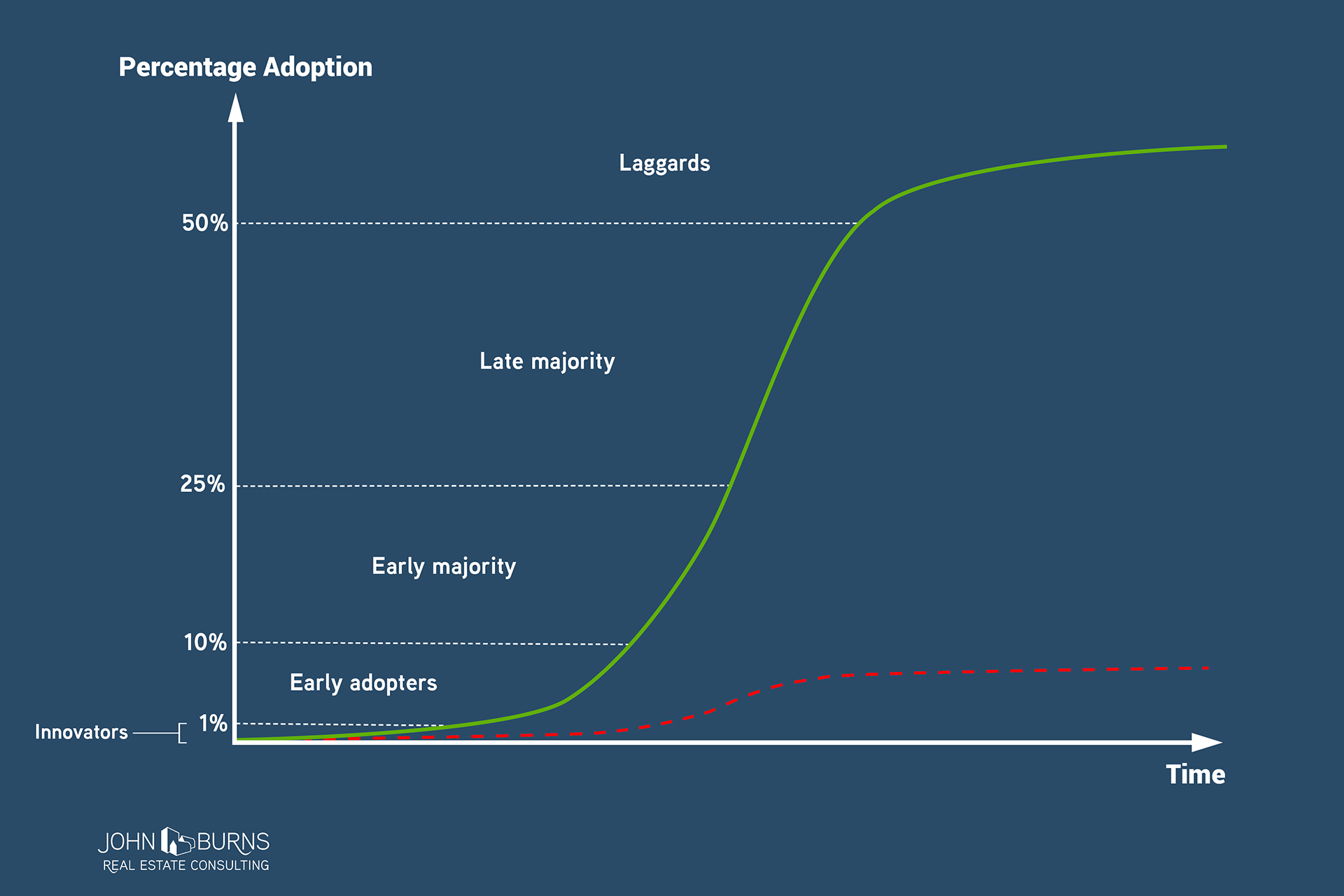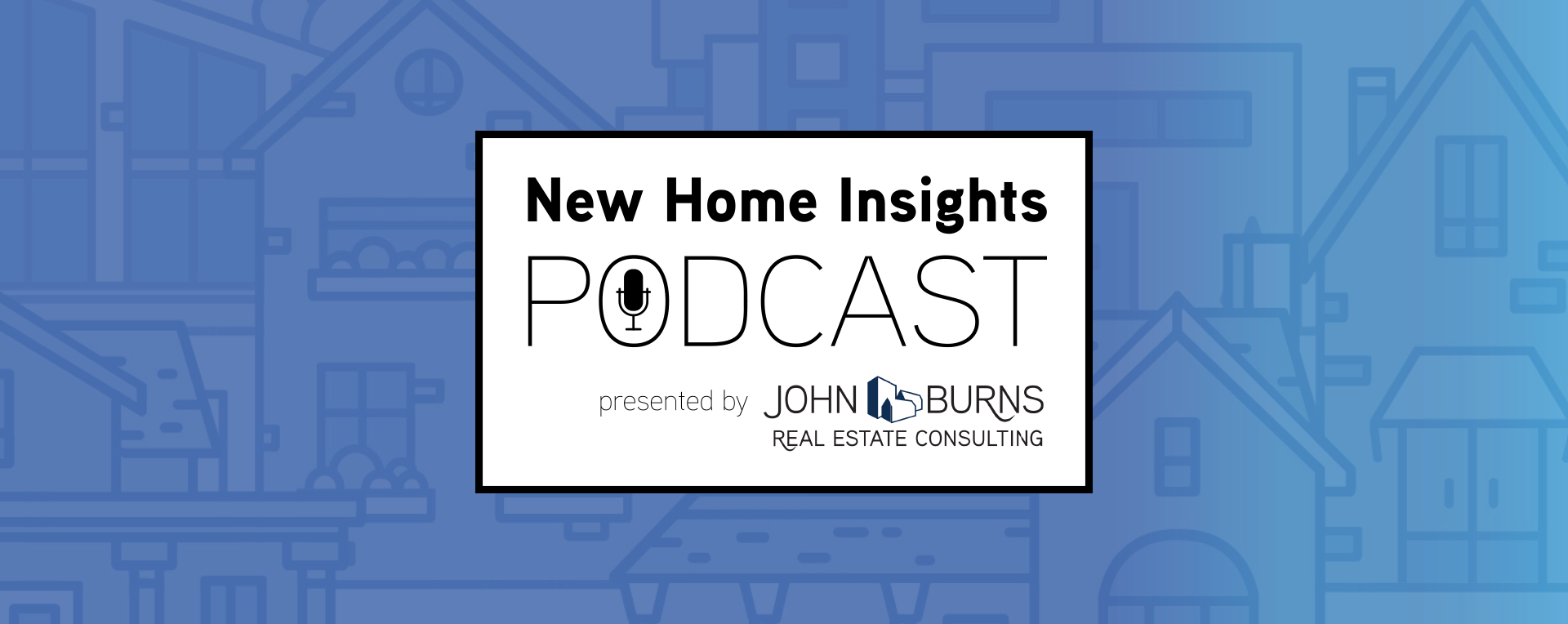Which trends will matter and which will not? One way we think about this is by looking at the adoption curve below. Which innovations will explode along the green line versus stagnate along the red line?
In this podcast episode, Dean is joined by Susan Yashinsky, the VP of Innovation Trends at Sphere Trending and a frequent speaker at our Housing Design Summit. Susan helps us separate the trends that will go nowhere from the trends that will dominate the future. Susan works with many of the most forward-thinking building product researchers to help them understand how and why spaces are evolving.

Below are just a few of the wake-up calls Susan mentioned.
Co-Living Will Explode
Co-living solves two problems almost everyone acknowledges.
- Affordability. Co-living is less expensive. Many young adults view co-living as nothing more than transitioning from dormitory living to a more luxury form of dormitory living.
- Older generations called this “having roommates.”
- Younger generations believe that sleeping areas are for sleeping and can thus be small.
- Single households will explode in numbers due to:
- Younger generations finding their partner later in life
- Older generations outliving their partner for life
Single households have affordability problems as well as loneliness issues. 30% of Gen X will never marry compared to 14% in prior generations. Living alone can be depressing.
Renting Will Outpace Owning
Ponder the following:
- Older generations think ownership is smart and cool.
- Younger generations think renting is smart and cool. If you don’t agree, look at the changes in the retail industry.
Use Culturegraphic Analysis to Understand Your Buyers and Renters
Thanks to the Internet, it is easier than ever for like-minded people to find each other. If a growing number of people are finding their partner online, why won’t a growing number of people find neighbors online? Our consulting and DesignLens™ teams are finding many examples of culturally similar individuals living together. This might include:
- Well-being advocates. Homes that let in more light, use more natural materials, offer better indoor/outdoor living opportunities, and focus on indoor air quality tend to attract people with the same values.
- Tech seekers. New homes and apartments with smart home technology attract tech seekers and those who always want the newest of the new. Many tech seekers will prefer to rent because they believe today’s great technology will be obsolete in a few years.
Functionality Will Dominate Design Trends
Susan had two great quotes on functionality:
“Trends start small. When tiny homes came out, people thought it was a joke.'”
-Susan Yashinsky, VP Innovation Predictor, Sphere Trending
It is not a joke. Now we have backyard living spaces like ADUs [accessory dwelling units] in California.
“As a home lives smaller, every inch has to work a little bit harder, and that is just getting design creativity into the landscape.'”
-Susan Yashinsky, VP Innovation Predictor, Sphere Trending
Even hallways need great function now.
Other Tidbits
- Prefab is the future.
- Smart tech is invading every product.
- Privacy and safety are growing concerns.
- America’s pioneering spirit is making a comeback.
Enjoy the podcast. For more information on trends, join Susan and an amazing group of innovative housing design and business leaders at our upcoming Housing Design Summit in February, or ask our consultants for help setting you up for success.
Don’t miss out on future episodes!

The New Home Insights podcast is available on various platforms, including Apple Podcasts, Google Play Music, and Spotify. Episodes will be released bi-weekly. To receive email notifications whenever a new episode is released, fill out the form found on this page.

